When most people think of tree frogs, they imagine an exotic location like the rainforest. You might be surprised to learn that’s not the case. In fact, right here in the USA, there are hundreds of tree frogs. Indiana is home to some of the largest tree frogs in the world.
Indiana is the native zone of the Cuban tree frog, Spring Peeper, Gray tree frog, Blanchard’s cricket frog, Western chorus frog, Green tree frog, Boreal chorus frog & Northern cricket frog.
While they are generally shy and elusive creatures, tree frogs can be quite entertaining to watch as they hop around in search of food or shelter. In this short blog, you will explore the ins and outs of tree frogs in Indiana.
9 species of Tree frogs in Indiana
There are several different species of tree frog that call Indiana home. If you’re lucky, you may be able to see one for yourself just around any pond, lake, and even close to your backyard.
Chances go higher if your house is close to swamps or wetland areas. So let’s take a look at these frogs…
Cuban tree frog
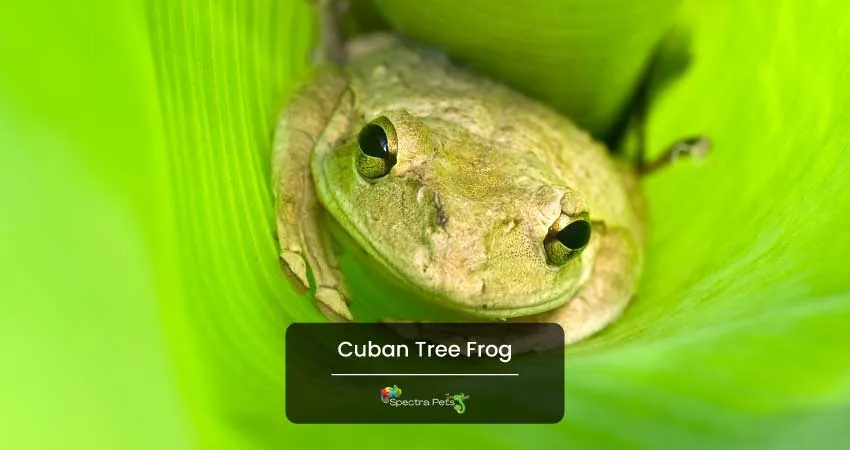
Mainly found in Cuba and also in the Bahamas, this frog has become a native one in Indiana. Compared to other tree frogs, the Cuban tree frog is quite bigger.
Though it sounds harsh, these frogs are indeed listed as invasive frogs in Indiana. Because they tend to be directly responsible for declining other treefrogs in Indiana which negatively impacts the local ecosystem. When it comes to size, the female Cuban tree frog can grow up to 5’’ while the male remains around 2-3’’. These aggressive eaters will eat any insect that fits inside their mouth and they often hunt other tree frogs.
Due to their large size and hunting ability, these frogs can live up to 5 -10 years in their natural habitat. Mostly Cuban tree frogs are found in swamps and pine forests. People of Indiana will encounter them around their homes and right on the corner of the landscaping plants.
Regarding skin color, these frogs can be green, brown, or grayish. Also, they have dark stripes on their back, sometimes they might have blotches on their back too. The most prominent attribute of them is their big size bug eyes.
Speaking of the breeding season, it can last from March to October month of the year. The male frog produces a calling sound like rasping and grating stone by staying at any canal or small pond.
Spring peeper
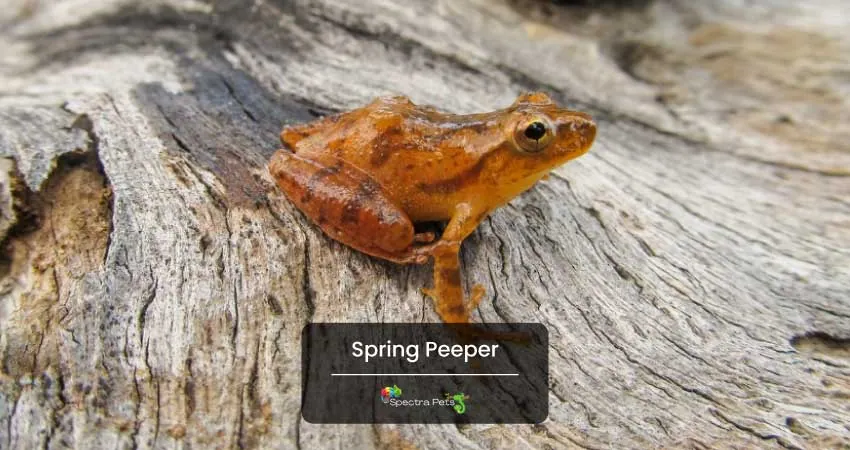
Comparatively small in size the spring peeper frog is commonly seen in brown, tan, and reddish colors. They also tend to have some spots on their backside. You will find them chilling in moist areas like swamps, low grassland close to the pond, and marshy woodland.
In terms of size and weight, these frogs can have 0.98-1.5’’ and 3 to 5 grams. These frogs are spread across the eastern part of the United States and also in some parts of Indiana, Florida, Texas, etc.
Although they are tiny, the male spring peeper can generate loud sounds close to 90 decibels. Using this sound, they attract the female during the breeding season which lasts from either March- June or November-March. After mating, the females lay eggs on the water plants and around 8 weeks later they turn into cute froglets.
Though they are nocturnal animals, they can hunt in the early evening and also in the late afternoon. And their meal consists of insects like spiders, ants, caterpillars, ticks, mites, and flies. These excellent climbers with ultra camouflage skin rarely miss their prey.
The most amazing thing about spring pepper is that in extreme winter these frogs can move into a hibernation mood and survive without any problem. Even during extremely high-temperature weather, they bury themselves under deep water and mud. Speaking of the endangered list, they fall into the least concern category because they produce a high number of babies around the year. In the wild, these frogs get an average lifespan of 3-4 years.
Gray tree frog
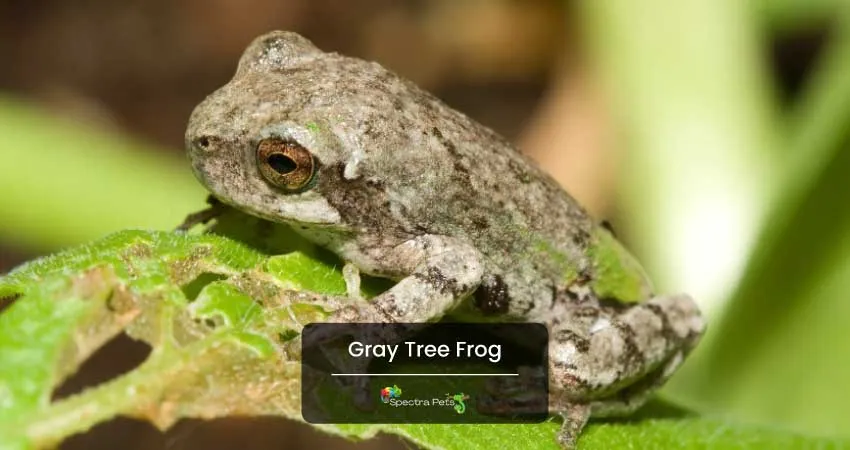
Gray tree frogs come with a skin colors of gray, brown, yellow and olive green, etc. These amazing frogs can change their color to blend with the surrounding color. Which helps them to avoid predators. Their skin is a bit warty and under each eye, you can see a white spot.
In Indiana, gray tree frogs are widely available and you can spot them in various places. Which includes agricultural land, forest, swamps, people’s backyard, and wooded areas. Their favorite hiding spot is tree holes, under leaves and shrubs, etc. They can breed when they are two years old. Their breeding season starts at the end of April and lasts up to August.
Like many other frog species, the male gray tree frog croaks throughout the breeding season to attract the females. In breeding time, these frogs become more greenish. Their favorite breeding ground is close to standing water where vegetation is present. The male gray tree frog can grow up to 1.25-2’’ while the female gray tree frog can reach 2.25’’ in size. Using their toe pads, this magnificent creature can climb on the tree both vertically and horizontally.
The long list of their food includes versatile insects, mites, snails, slugs, plant lice, and small-size frogs. Gray tree frogs get an average lifespan of 7-9 years in the wild.
Along with Indiana, they are native to northern Florida, Central Texas, Southeastern Canada, and the eastern United States. Though this species in their young stage mostly stays on the forest floor, in old age they tend to live close to the forest canopy.
Blanchard’s cricket frog
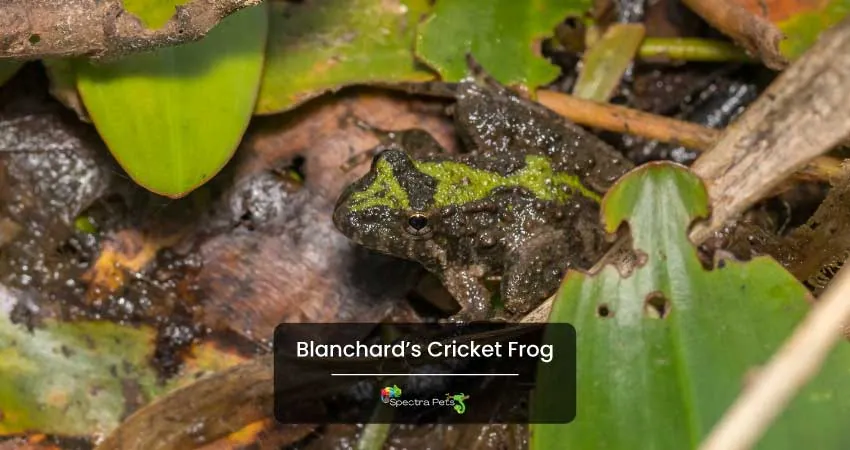
Another Indiana state endangered frog is the Blanchard’s cricket frog which loves to live in a versatile habitat that includes low prairies, mud flats, marshes, close to the river, pond, fens, and lakes.
They produce a clicking sound in their breeding time. The sound can be heard in the daylight, evening, and nighttime. Regarding size, they are very small with an average of 0.6-1.5’’. While their skin is warty, their skin color can range from brown, olive green, tan, greenish tan, and gray.
Moreover, this species can change its skin color with its surroundings. One of the main reasons behind their low population is not that they produce fewer offspring but their intolerance to winter. When winter arrives in Indiana and temperatures reach sub-zero then only 5% of the Blanchard’s cricket frog survive.
When it comes to lifespan, these frogs have poor longevity around 4 months only. Their diet consists of aquatic insects and terrestrial insects. These frogs wake up from hibernation in the first part of April. And their breeding season starts from May-July. For breeding purposes, the male and female choose slow-moving water or quiet water bodies.
Green tree frog
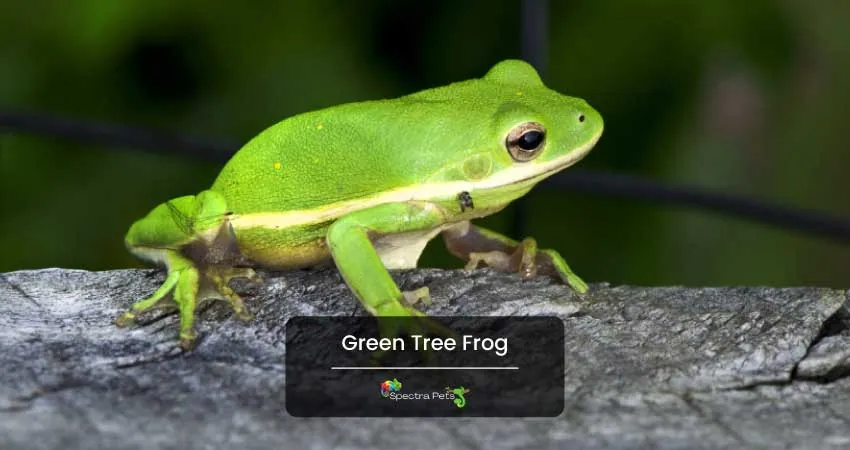
Green treefrogs are one of the most adaptable species that can live in versatile places that include trees, marshes, ponds, lakes and coastal swamps, etc. Although they are mainly tree dwellers, you will see them in habitats where clean water and footing vegetation is present.
When breeding season enters, they make a nasal “honk” sound to get the attention of the female. They can make the calling sound 75 times a minute. Their breeding season can stretch from March-October. But they prefer to breed during the rainfall time.
These tree frogs keep the balance of the ecosystem by eating a significant amount of mosquitoes, crickets, locusts, small size bats, snakes, etc. Green tree frogs normally have a lime-green skin color. But sometimes their color turns gray, olive, and brown during resting time.
Unlike many frog species, the green tree frog has a stable population and is the least concerned frog according to IUCN. People living in Indiana especially the southeastern part of Indiana will often see this species in their garden close to the garden lights eating insects or waiting for insects to eat. These frogs love to eat highly active insects.
Their lifespan in the wild is around 2-5 years. In terms of size, the female is bigger than the male green tree frog. Size can vary from 1.25-2.25’’. These nocturnal buddies stay sluggish in day time while hunting for food at night.
Western chorus frog
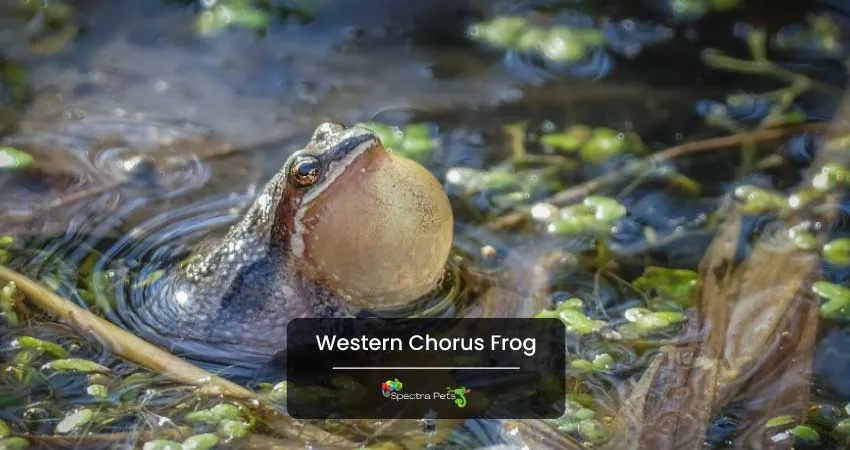
These amazing tree frogs choose their breeding time in the first part of March. The male calls out to the female by producing a sound that exactly feels like a fingernail running along on a plastic comb. During the breeding time, they are hard to see anywhere. Every single pair of mating can produce 500-1500 offspring. Their food list is pretty wide and includes tiny arthropods & invertebrates. They love eating flies, grasshoppers, spiders, moths, ants, caterpillars, mosquitoes, small beetles, etc.
Among all the treefrog species, the western chorus frog is one of the smallest. An adult frog of this species can reach lengths of ¾’’ to 1 & ½’’. Unlike many other frogs, their skin is smooth. You will find them in different colors like olive green, brown, and gray. All across Indiana state, the western chorus frog is available and holds a strong-stable population. They inhabit mostly woodland ponds, marshes, temporary ponds of urban areas, bottomland swamps, etc.
In the ecological food chain, the western frog is the target of many predators like fish, snakes, and birds. So, their lifespan in the wild is quite low with an average of 1 year only. However, some lucky frogs can make it up to 3 years.
Not only in Indiana, it can be found in the east-central USA & also in some parts of Canada. Due to their high availability, they are listed as the least concerned species. The western chorus frog goes for hibernation in the winter season and doesn’t show up until springtime.
Boreal chorus frog
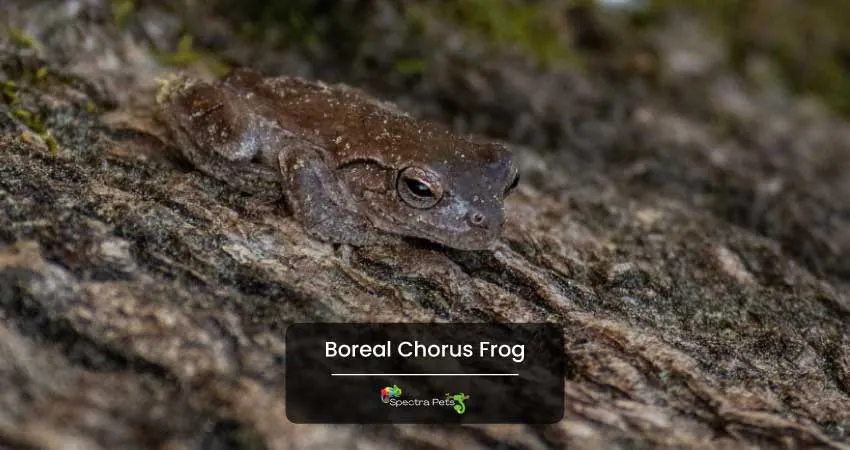
The shy and nocturnal boreal chorus frogs are hard to see close to public places. According to the Indiana Department of Natural Resources, these frogs are listed as a special concern. This indicates these frogs have a decline in population growth.
The tiny species are highly insectivores and hunt mostly on earthworms, slugs, centipedes, spiders, mites, etc. Speaking of color, this treefrog can be brown, gray, greenish-gray, olive, or reddish. Like many other species, the female boreal chorus frogs are bigger than their male lover. The size of this frog can vary from 0.75 to 1.5’’. The white stripes on their back are easily noticeable.
In addition to that, these frogs’ adaptation is quite impressive. They are excellent climbers but due to being in search of food, they prefer to stay on the ground. The range of this species is not only in Indiana, but they are also found on the north side of North Americana & also in Canada. They never choose their habitat close to any speed-moving water source.
Furthermore, the boreal chorus frogs can live up to 3+ years living in their natural habitat. Sadly, most frogs die within the first 2 years either because of a higher-level predator or any disease.
One of the unique attributes of this frog is that it can easily hibernate and survive in harsh -40 degrees Fahrenheit. As soon as winter says bye they come back with full energy to hunt & live. Fields flooded with water, sloughs of rivers, farm ponds, ditches, and woodland ponds are some of their favorite natural habitats.
Cope’s gray tree frog
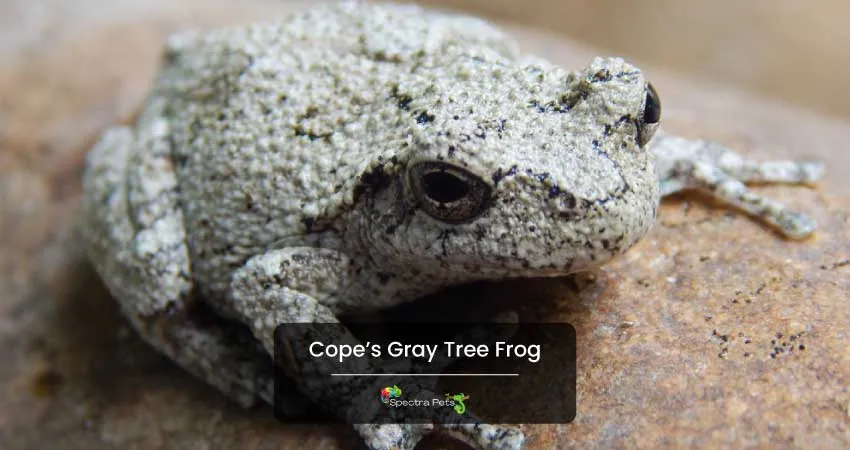
Their roaming area and living zone include woodland, swamps, grasslands, fields, and prairies. Compared to other tree frog, the Cope’s gray tree frog has a better lifespan in the wild. The average lifespan is 2.5 years while the maximum is 7 years.
Due to its similarity to the gray tree frog, it’s hard for any common man to detect the Cope’s gray tree frog. In terms of color variation, you will find them in brown & green mix, pearl gray, gray-green, etc. Their color sometimes looks the same as the bark of trees. However, this frog can change its color to dark color when the temperature falls.
Due to their outstanding climbing ability, they swiftly climb on trees and spend a long time on trees. The size of this species remains within the 1.25-2’’ range. They usually hunt at night time from one branch to another branch and one leaf to another leaf in search of food.
Between March-August, the male frog comes down to the wetlands with an ample amount of vegetation. After breeding, the female Cope’s gray frog lays eggs with 10-40 making each clutch on the shallow water surface. And within the next 2 months, the eggs are transformed into froglets.
The Diet of this small size frog is quite long and includes snails, plant lice, moths, spiders, moths, and smaller species of frogs. These frogs are found in Florida, Central Texas, and Manitoba in Canada.
Gray tree frogs’ population in Indiana state is moderate and not on the endangered list. This frog can freeze itself but its cell does not freeze up. After extreme winter, they slowly come out of their hibernation mood and become active.
Northern cricket frog
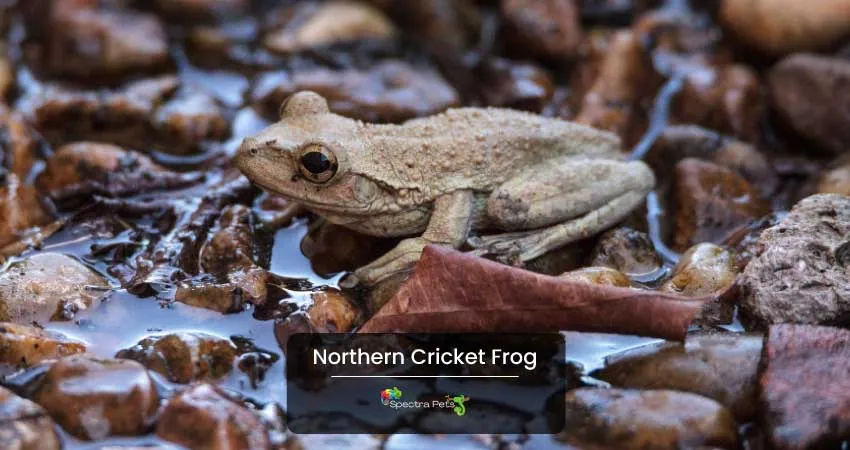
This treefrog is one of the special concern frogs in Indiana. It’s not only a native of the United States but also Northeastern Mexico. Their favorite living place is the weedy shoreline of any lake, river, or pond.
Although this tiny creature originates from the tree frog family, they spend most of their time close to water bodies. Their skin is a bit rough and the color can be tan, black, brown, greenish tan, red or yellow. On the back side, this frog might have irregular stripes.
It is one of the small size frog species that have an average size of only 1’’. Their position in the food chain makes them attractive to many predators. And they use their jumping skill of 3 feet at one jump to run away from the predator. Also, they are good swimmers too.
Speaking of diet, they consume tiny insects like flies, ants, mites, etc. The northern cricket frog breeds between May and August, and the male produces a metallic gick sound to call the female for breeding. This small frog is native to not the only United States, but you can also see them in Mexico too. Their lifespan is mostly around 4 months while the lucky frog can live up to 4-5 years.
Final words
By now you know that there’s a strong presence of tree frogs in Indiana. Though some of those are listed as endangered, taking proper steps would help them to boost population growth in their habitat.
These amazing tree frogs are living harmoniously with nature while ensuring an ample amount of balance in the ecosystem. Hope this article enhances your idea about tree frogs to a whole new level.
Tree Frogs Found in the Nearby States of Indiana:
